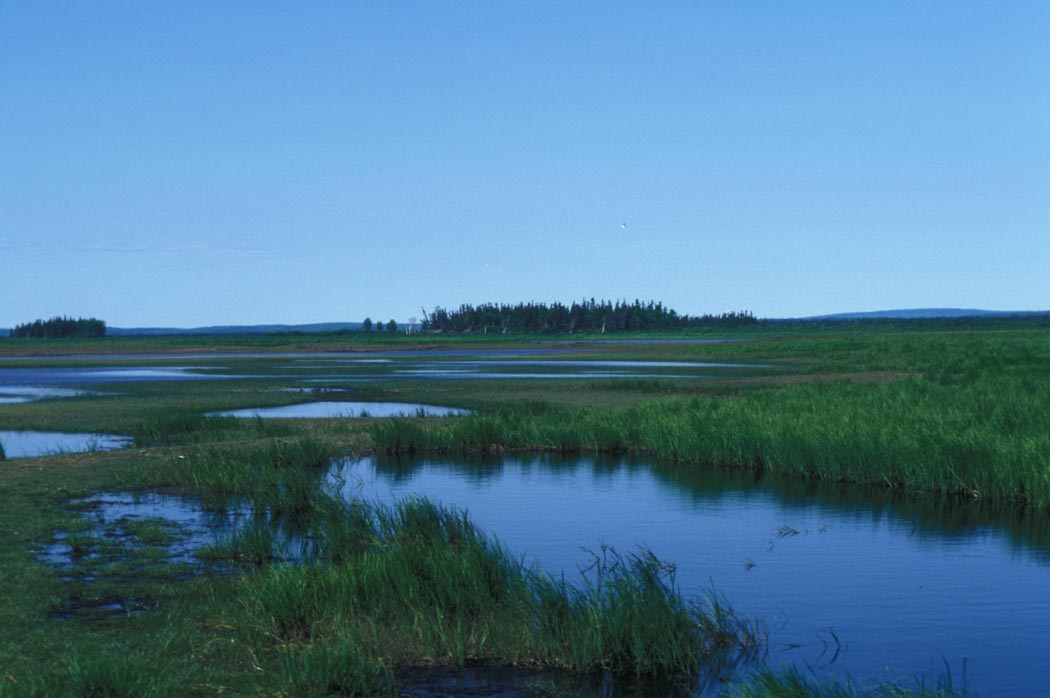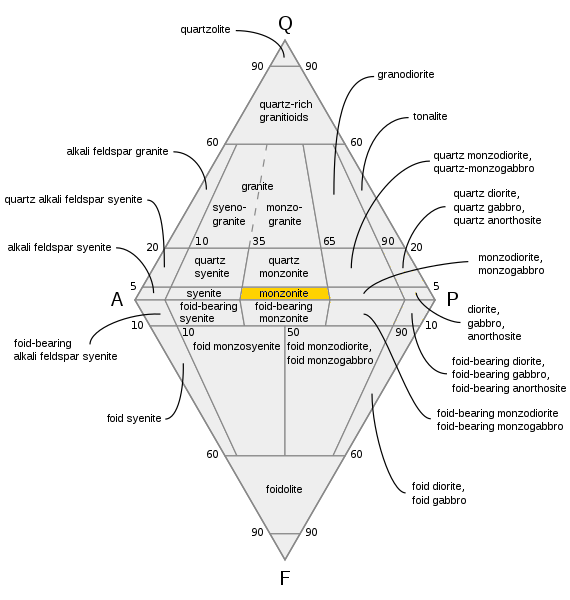|
Spanish Peaks Wilderness
The Spanish Peaks Wilderness is a wilderness area in Huerfano County and Las Animas County, Colorado, United States, located southwest of Walsenburg. All of the wilderness area is located within San Isabel National Forest, which is managed by the U.S. Forest Service. Geography The Spanish Peaks () are prominent landmarks along the eastern front of the southern Rockies. Their snow-capped summits of the East Spanish Peak and the West Spanish Peak, rise above the arid plains, made the "Double Mountain" an easily recognizable reference point to travelers of all cultures. The West Spanish Peak with an elevation of , overtops the East Spanish Peak which only has an elevation of . However, this difference is not readily discernible from a distance. History The Peaks have traditional and religious significance to American Indian tribes including the Apache, Comanche, and Ute. The common Indian name appears in at least three different spellings in various accounts, reflectin ... [...More Info...] [...Related Items...] OR: [Wikipedia] [Google] [Baidu] |
Huerfano County, Colorado
Huerfano County ( ; ) is a county located in the U.S. state of Colorado. As of the 2020 United States census, 2020 census, the population was 6,820. The county seat is Walsenburg, Colorado, Walsenburg. The county, whose name comes from the Spanish language, Spanish ''huérfano'' meaning "orphan", was named for the Huerfano Butte, a local landmark. The area of Huerfano County boomed early in the 1900s with the discovery of large coal deposits. After large scale World War II coal demand ended in the 1940s Walsenburg and Huerfano saw a steady economic decline through 2015. History Huerfano County was one of the original 17 counties created by the Territory of Colorado on November 1, 1861, and was originally larger than its present size. On November 2, 1870, the Colorado General Assembly created Greenwood County, Colorado Territory, Greenwood County from former Cheyenne and Arapaho tribal land and the eastern portion of Huerfano County. There are countless reports of vast New Spai ... [...More Info...] [...Related Items...] OR: [Wikipedia] [Google] [Baidu] |
Sangre De Cristo Mountains
The Sangre de Cristo Mountains (Spanish language, Spanish for "Blood of Christ") are the southernmost mountain range, subrange of the Rocky Mountains. They are located in southern Colorado and northern New Mexico in the United States. The mountains run from Poncha Pass in South-Central Colorado, trending southeast and south, ending at Glorieta Pass, southeast of Santa Fe, New Mexico. The mountains contain a number of fourteeners, fourteen thousand foot peaks in the Colorado portion, as well as several peaks in New Mexico which are over thirteen thousand feet. The name of the mountains may refer to the occasional reddish hues observed during sunrise and sunset, and when alpenglow occurs, especially when the mountains are covered with snow. Although the particular origin of the name is unclear, it has been in use since the early 19th century. Before that time the terms "La Sierra Nevada", "La Sierra Madre", "La Sierra", and "The Snowies" (used by English speakers) were used. Accordi ... [...More Info...] [...Related Items...] OR: [Wikipedia] [Google] [Baidu] |
Wilderness Areas Of Colorado
Wilderness or wildlands (usually in the plural) are Earth's natural environments that have not been significantly modified by human activity, or any nonurbanized land not under extensive agricultural cultivation. The term has traditionally referred to terrestrial environments, though growing attention is being placed on marine wilderness. Recent maps of wilderness suggest it covers roughly one-quarter of Earth's terrestrial surface, but is being rapidly degraded by human activity. Even less wilderness remains in the ocean, with only 13.2% free from intense human activity. Some governments establish protection for wilderness areas by law to not only preserve what already exists, but also to promote and advance a natural expression and development. These can be set up in preserves, conservation preserves, national forests, national parks and even in urban areas along rivers, gulches or otherwise undeveloped areas. Often these areas are considered important for the survival ... [...More Info...] [...Related Items...] OR: [Wikipedia] [Google] [Baidu] |
Protected Areas Of Las Animas County, Colorado
Protection is any measure taken to guard something against damage caused by outside forces. Protection can be provided to physical objects, including organisms, to systems, and to intangible things like civil and political rights. Although the mechanisms for providing protection vary widely, the basic meaning of the term remains the same. This is illustrated by an explanation found in a manual on electrical wiring: Some kind of protection is a characteristic of all life, as living things have evolved at least some protective mechanisms to counter damaging environmental phenomena, such as ultraviolet light. Biological membranes such as bark on trees and skin on animals offer protection from various threats, with skin playing a key role in protecting organisms against pathogens and excessive water loss. Additional structures like scales and hair offer further protection from the elements and from predators, with some animals having features such as spines or camouflage servi ... [...More Info...] [...Related Items...] OR: [Wikipedia] [Google] [Baidu] |
Dike (geology)
In geology, a dike or dyke is a sheet of rock that is formed in a fracture of a pre-existing rock body. Dikes can be either magmatic or sedimentary in origin. Magmatic dikes form when magma flows into a crack then solidifies as a sheet intrusion, either cutting across layers of rock or through a contiguous mass of rock. Clastic dikes are formed when sediment fills a pre-existing crack.Essentials of Geology, 3rd Ed, Stephen Marshak Magmatic dikes A magmatic dike is a sheet of igneous rock that cuts across older rock beds. It is formed when magma fills a fracture in the older beds and then cools and solidifies. The dike rock is usually more resistant to weathering than the surrounding rock, so that erosion exposes the dike as a natural wall or ridge. It is from these natural walls that dikes get their name. Dikes preserve a record of the fissures through which most mafic magma (fluid magma low in silica) reaches the surface. They are studied by geologists for the clues they ... [...More Info...] [...Related Items...] OR: [Wikipedia] [Google] [Baidu] |
Syenodiorite
Monzonite is an igneous intrusive rock, formed by slow cooling of underground magma that has a moderate silica content and is enriched in alkali metal oxides. Monzonite is composed mostly of plagioclase and alkali feldspar. Syenodiorite is an obsolescent term for monzonite or for monzodiorite.Le Maitre, R.W., ''Igneous Rocks: A Classification and Glossary of Terms'' Cambridge University Press, 2nd ed, pp. 113 Larvikite is a particular form of monzonite. Description Monzonite is a coarse-grained (phaneritic) igneous rock. Such rocks are classified by their relative percentages of quartz, plagioclase, alkali feldspar, and feldspathoid (the QAPF classification). Monzonite is defined as rock having less than 5% quartz in its QAPF fraction and in which alkali feldspar makes up between 35% and 65% of the total feldspar content. If quartz constitutes greater than 5% of the QAPF fraction, the rock is termed a quartz monzonite, while if feldspathoids are present as up to 10% of the ... [...More Info...] [...Related Items...] OR: [Wikipedia] [Google] [Baidu] |
Granodiorite
Granodiorite ( ) is a coarse-grained (phaneritic) intrusive igneous rock similar to granite, but containing more plagioclase feldspar than orthoclase feldspar. The term banatite is sometimes used informally for various rocks ranging from granite to diorite, including granodiorite. The term ''granodiorite'' was first used by George F. Becker, G. F. Becker (1893) to describe granitic rocks in the Sierra Nevada, United States. Composition According to the QAPF diagram, granodiorite has a greater than 20% quartz by volume, and between 65% and 90% of the feldspar is plagioclase. A greater amount of plagioclase would designate the rock as tonalite. Granodiorite is felsic to intermediate composition, intermediate in composition. It is the Intrusive rock, intrusive igneous equivalent of the extrusive igneous dacite. It contains a large amount of sodium (Na) and calcium (Ca) rich plagioclase, potassium feldspar, quartz, and minor amounts of muscovite mica as the lighter colored miner ... [...More Info...] [...Related Items...] OR: [Wikipedia] [Google] [Baidu] |
Granite
Granite ( ) is a coarse-grained (phanerite, phaneritic) intrusive rock, intrusive igneous rock composed mostly of quartz, alkali feldspar, and plagioclase. It forms from magma with a high content of silica and alkali metal oxides that slowly cools and solidifies underground. It is common in the continental crust of Earth, where it is found in igneous intrusions. These range in size from dike (geology), dikes only a few centimeters across to batholiths exposed over hundreds of square kilometers. Granite is typical of a larger family of ''granitic rocks'', or ''granitoids'', that are composed mostly of coarse-grained quartz and feldspars in varying proportions. These rocks are classified by the relative percentages of quartz, alkali feldspar, and plagioclase (the QAPF diagram, QAPF classification), with true granite representing granitic rocks rich in quartz and alkali feldspar. Most granitic rocks also contain mica or amphibole minerals, though a few (known as leucogranites) conta ... [...More Info...] [...Related Items...] OR: [Wikipedia] [Google] [Baidu] |
Stock (geology)
In geology, a stock is an igneous Intrusion (geology), intrusion that has a surface exposure of less than ,Whittow, John (1984). ''Dictionary of Physical Geography''. London: Penguin, 1984, p. 513. . differing from batholiths only in being smaller. A stock has a Intrusive rock#Related terms, discordant relationship with the rocks that it intrudes. Many stocks are cupola (geology), cupolas of hidden batholiths. Some circular or elliptical stocks may be volcanic plugs, which fill the vents of now extinct volcanoes. A boss is a small stock. Examples * the Alta and Clayton Peak stocks (composed of granodiorite), near Park City, Utah * the Hellroaring Creek and Salal Creek Pluton, Salal Creek stocks (of granite-granodiorite and quartz monzonite, respectively) in British Columbia, Canada * the Céret stock (of gabbro and diorite) in Pyrénées-Orientales, France * the Parashi stock (of tonalite) in La Guajira Department, Colombia * stocks of syenite in the Caldera de Tejeda on Gran Canar ... [...More Info...] [...Related Items...] OR: [Wikipedia] [Google] [Baidu] |
Ute People
Ute () are an Indigenous peoples of the Great Basin, Indigenous people of the Great Basin and Colorado Plateau in present-day Utah, western Colorado, and northern New Mexico.Pritkzer''A Native American Encyclopedia'' p. 242 Historically, their territory also included parts of Wyoming, eastern Nevada, and Arizona. Their Ute dialect is a Colorado River Numic language, part of the Uto-Aztecan language family Historically, the Utes belonged to almost a dozen nomadic bands, who came together for ceremonies and trade. They also traded with neighboring tribes, including Pueblo peoples. The Ute had settled in the Four Corners region by 1500 CE. The Utes' first contact with Europeans was with the Spanish in the 18th century. The Utes had already acquired horses from neighboring tribes by the late 17th century. They had limited direct contact with the Spanish but participated in regional trade. Sustained contact with Euro-Americans began in 1847 with the arrival of the Mormons to the Am ... [...More Info...] [...Related Items...] OR: [Wikipedia] [Google] [Baidu] |







